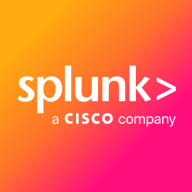

Splunk Enterprise Security and LogLogic compete in the security management space, focusing on SIEM capabilities. Splunk stands out with broader data integration and analytics, while LogLogic is preferred for its cost-effectiveness in log management.
Features: Splunk Enterprise Security includes robust analytics, machine learning capabilities, and extensive integration options, providing comprehensive security coverage. It supports advanced threat detection and offers an intuitive dashboard interface for real-time monitoring. LogLogic is well-suited for large-scale log data handling and offers efficient search capabilities alongside straightforward reporting tools, ideal for enterprises focusing on log management simplicity.
Ease of Deployment and Customer Service: Splunk allows for streamlined deployment with comprehensive documentation and is equipped for integration in complex environments, supported by proactive customer service. LogLogic is characterized by its simpler setup process, making it accessible to smaller enterprises and features prompt, direct assistance, ensuring ease of use and customer satisfaction.
Pricing and ROI: Splunk's initial setup costs are higher, offering extensive data insights and broader functionalities, potentially leading to substantial ROI for enterprises seeking comprehensive security solutions. LogLogic presents a cost-effective option with rapid ROI for organizations dedicated to log data management, maintaining attractive pricing for targeted use cases.
| Product | Market Share (%) |
|---|---|
| Splunk Enterprise Security | 9.2% |
| LogLogic | 0.3% |
| Other | 90.5% |

| Company Size | Count |
|---|---|
| Small Business | 110 |
| Midsize Enterprise | 50 |
| Large Enterprise | 257 |
Splunk Enterprise Security delivers powerful log management, rapid searches, and intuitive dashboards, enhancing real-time analytics and security measures. Its advanced machine learning and wide system compatibility streamline threat detection and incident response across diverse IT environments.
Splunk Enterprise Security stands out in security operations with robust features like comprehensive threat intelligence and seamless data integration. Its real-time analytics and customizable queries enable proactive threat analysis and efficient incident response. Integration with multiple third-party feeds allows detailed threat correlation and streamlined data visualization. Users find the intuitive UI and broad compatibility support efficient threat detection while reducing false positives. Despite its strengths, areas such as visualization capabilities and integration processes with cloud environments need enhancement. Users face a high learning curve, and improvements in automation, AI, documentation, and training are desired to maximize its potential.
What Are the Key Features of Splunk Enterprise Security?In specific industries like finance and healthcare, Splunk Enterprise Security is instrumental for log aggregation, SIEM functionalities, and compliance monitoring. Companies leverage its capabilities for proactive threat analysis and response, ensuring comprehensive security monitoring and integration with various tools for heightened operational intelligence.
We monitor all Security Information and Event Management (SIEM) reviews to prevent fraudulent reviews and keep review quality high. We do not post reviews by company employees or direct competitors. We validate each review for authenticity via cross-reference with LinkedIn, and personal follow-up with the reviewer when necessary.